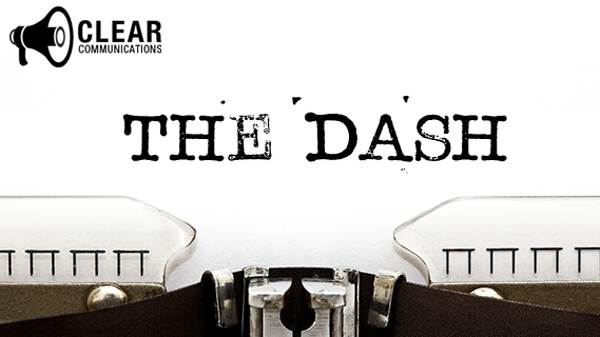Origin: a Latin derivative
meaning "Gift of the Earth."
Clear Communications: The Dash

Dashes
There are three basic types of dashes
Hyphen (the shortest, needs no Key Shortcut)
En dash (Key Shortcut: Ctrl + minus)
Em dash (Key Shortcut: Ctrl + alt + minus)
Hyphens
Hyphens are used to create compound words, as separators, and in word breaks.
1. Phrasal adjectives modify nouns, and when they precede the noun should be hyphenated to make your sentence easier to understand for your reader.
- Consider this example: small animal hospital vs small-animal hospital.
- larger-than-life personality
- over-the-top reaction
2. If the phrasal adjective follows the noun, don’t hyphenate it. (a well-trained athlete vs an athlete who is well trained.)
3. If the phrasal adjective begins with an adverb ending in “-ly,” don’t hyphenate: a sharply worded reply (but, a not-so-sharply-worded reply).
4. Always hyphenate when using a word that takes a capital letter: anti-American, pre-Columbian; when joining a letter to a word: X-ray; and when spelling out numbers twenty-one to ninety-nine.
5. When it comes to compound words, there is one simple rule: look it up in the dictionary.
En Dashes
En dashes are named for the width of the dash, which matches the capital “N.”
1. En dashes are used primarily to connect numbers and words in a range and signifies “up to and including or through.”
- Read pages 16–32.
2. En dashes are sometimes used for scores and directions and replace the word “to.”
- The game ended with the home team winning 10–2.
- The New York–Paris flight was cancelled.
Em Dashes
Just as en dashes are the same width as a capital “N,” em dashes are the same width as a capital “M.”
1. You can use paired em dashes wherever you would use parentheses, commas, or a colon to set apart elements of a sentence. Because it is a more dramatic way to create your sentence, it is recommended that you limit its use.
2. One of the more common ways to use it is with parenthetical information:
- The influence of three impressionists—Monet, Sisley, and Degas—is obvious in her work.
- The chancellor—he had been awake most of the night—came down in an angry mood.
- She outlined the strategy—a strategy that would, she hoped, secure the peace.
3. We can also use it with introductory nouns and phrases:
- Broken promises, petty rivalries, and false rumors—such were the obstacles he encountered.
4. A question mark and an exclamation point are the only other punctuation that can appear with paired em dashes—never a comma, colon, or semicolon and only rarely a period. Question marks and exclamation points should appear within the em dashes.
- Without further warning—but what could we have done to stop her?—she left the plant, determined to stop the union’s picketing.
We want to know what you think. What grammar tips would be most helpful for you?






